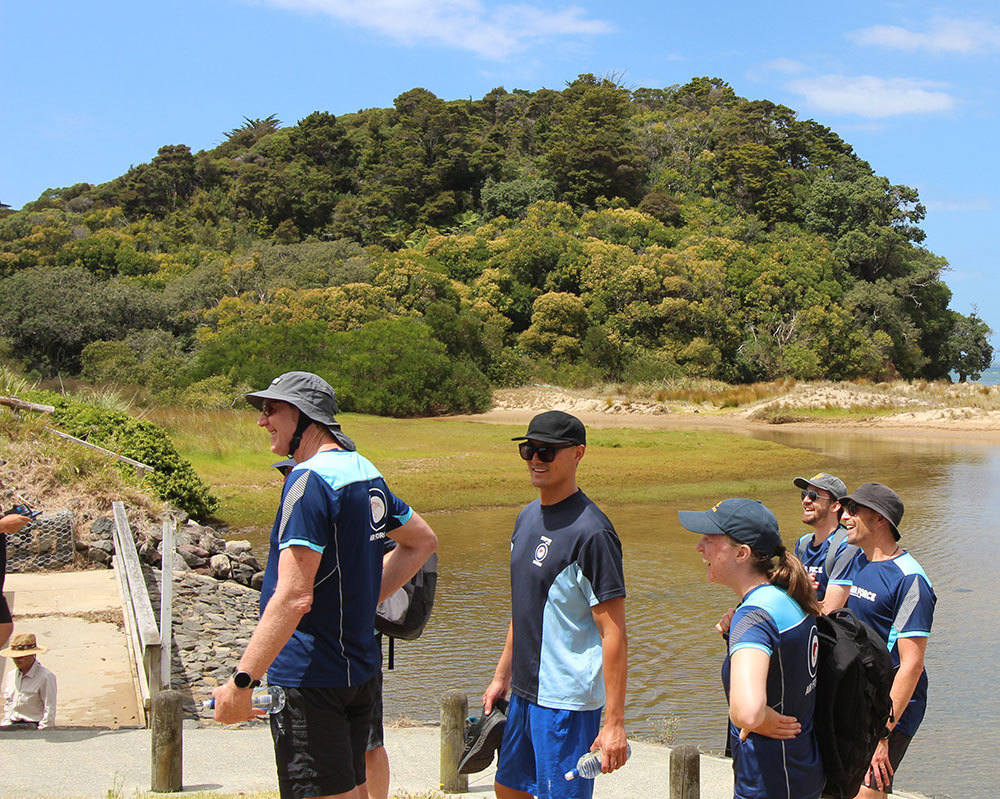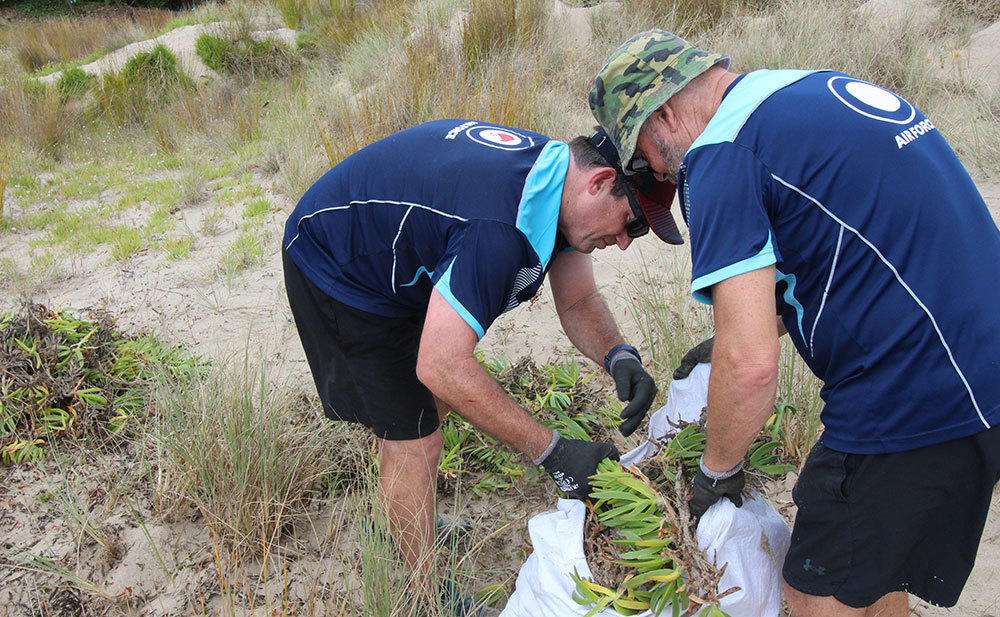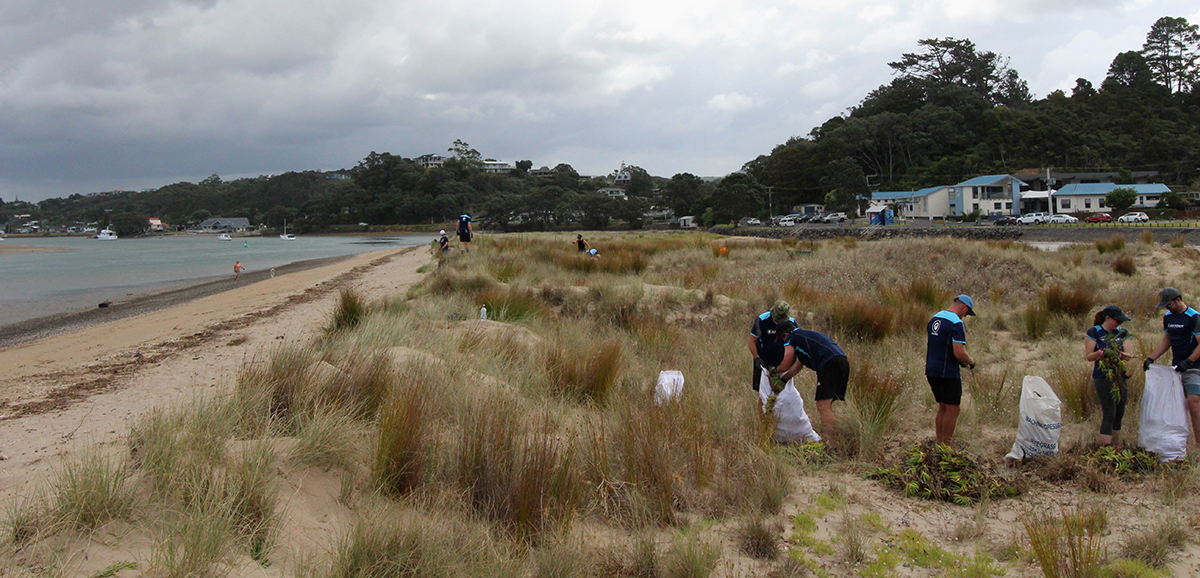Story
Joining forces to restore Ngunguru’s dunes and wildlife
More than 20 people from the local community and several organisations joined forces at a recent working bee to remove invasive plants from Ngunguru’s Kaukarangi Bay sand dunes.
The area is better known as the small sandspit in front of Ngunguru school. As well as being an iconic part of the area’s natural character, the dunes are home to protected species and acts as an important buffer to mitigate the effects of coastal erosion.
The day-long working bee brought together the Ngunguru community, along with Northland Regional Council staff and partners from DuneScape, Specialist Weed Assistance Tutukaka (SWAT), and the New Zealand Air Force.
Volunteers drilled and poisoned invasive privet, acacia, and sweet pea shrub plants and removed ice plants from the sand to help restore the dunes to their natural state.
DuneScape is a local organisation that works to protect and restore the natural dune ecosystems across the greater Whangārei area. Its founder and ecologist Amy Bazeley, who is leading the Kaukarangi Bay sandspit restoration project, explains:

Members of the New Zealand Air Force arrive at Ngunguru’s Kaukarangi Bay sand dunes ready to assist in this community led project.
“We established a nursery for native and indigenous dune plants including spinifex (also known as tihetihe or kowhangatara), pīngao, and pohuehue last year. Some of the plants in our nursery will replace those removed today, playing a vital role in binding sand, mitigating the risk of coastal erosion, and restoring biodiversity in the area.”
Coastal Biodiversity Advisor Laura Shaft explains the impact this mahi has on the life contained within and around the dunes.
“A variety of protected species live within these dunes including native skinks, butterflies and even the elusive katipō spider,” says Laura.
“Threatened shorebirds including the New Zealand dotterel (tūturiwhatu) and variable oystercatchers (tōrea pango) also nest and raise their young on this sandspit.
“Ensuring invasive plants are removed and replaced with indigenous dune plants like spinifex and pīngao plays a crucial role in ensuring biodiversity outcomes in this area for generations to come.
“This work is also vital to improving the protective function of the dunes and enabling them to recover from storm events.”

New Zealand Airforce volunteers bagging-up the invasive exotic iceplant ready for removal.
The importance of the dunes on the surrounding area was demonstrated throughout Cyclone Gabrielle. Cameras overlooking the dunes revealed that they played a pivotal role in limiting damage to the neighbouring road and school.
With three trailer loads worth of invasive plants removed from the site, organisers are pleased with the results of the working bee and optimistic about the future of the dunes.
SWAT team member Silvia Pinca expresses gratitude for the community outreach that supported this initiative.
“It's beautiful to be able to cooperate with different people and groups, and incredible how quickly this initiative was able to be set up,” says Silvia.
“We had a great outpouring from the community who didn’t hesitate to offer up resources, trailers, and helping hands.”
This includes support from a group of twelve Air Force staff, who participated as a part of their yearly commitment to assisting in community led projects.
For more information on how you can get involved in dune restoration, visit: nrc.govt.nz/coastcare

Volunteers spread across Ngunguru’s Kaukarangi Bay sand dunes, better known as the small sandspit in front of Ngunguru school.
